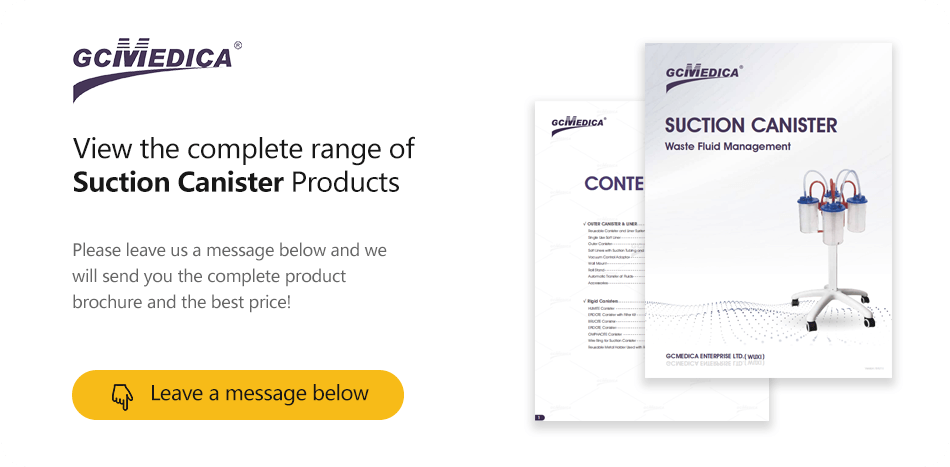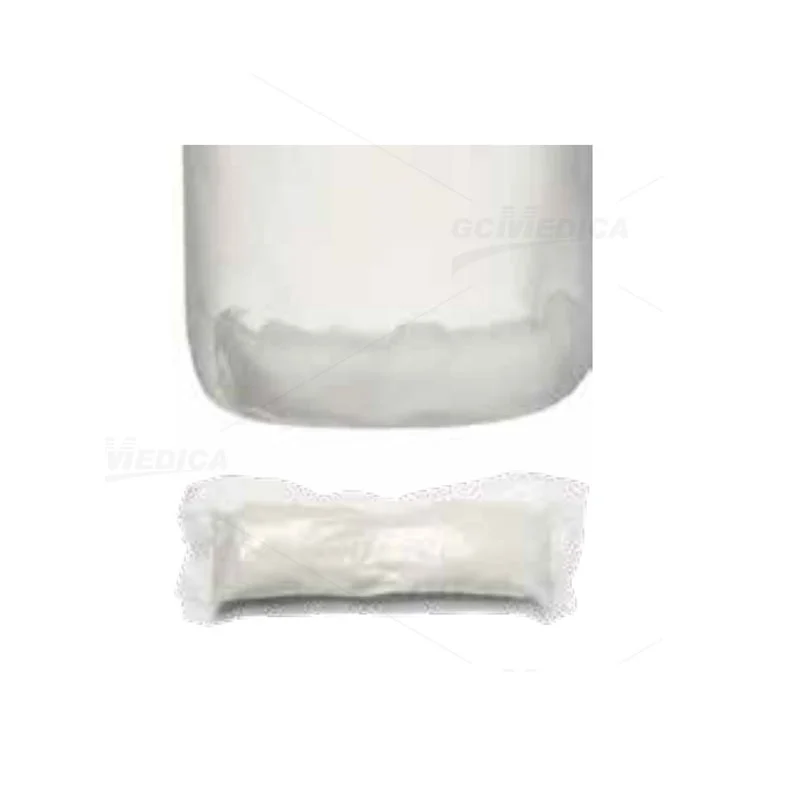-
Laparoscopic & Endoscopic Products
-
Laparoscopic Procedures
- Heated Insufflation Tube
- Laparoscopic Smoke Filter
- High FLow CO2 Laparoscopic Insufflation Filter Tube Set
- Veress Needle
- High Flow Heated Insufflation Tube
- Arthroscopy Irrigation Set
- Disposable Bladeless / Bladed Trocar with Thread / Balloon
- Disposable Wound Protector
- Disposable Height Changeable Wound Protector
- Retrieval Bag
- Laparoscopic Suction Irrigation Set
- Laparoscopic Insufflator
- Endoscopy Care and Accessories
-
Laparoscopic Procedures
- Respiratory & Anesthesia
- Cardiothoracic Surgery
- Gynaecology
-
Urology
- CathVantage™ Portable Hydrophilic Intermittent Catheter
-
Cysto/Bladder Irrigation Set
- M-easy Bladder Irrigation Set
- B-cylind Bladder Irrigation Set
- S-tur Bladder Irrigation Set
- S-uni Bladder Irrigation Set
- B-uro Bladder Irrigation Set
- Premi Bladder Irrigation Set
- J-pump Bladder Irrigation Set
- J-tur Bladder Irrigation Set
- H-pump Bladder Irrigation Set
- Sup-flow Bladder Irrigation Set
- Maple Irrigation Set
- Peony Irrigation Set
- Nelaton Catheter
- Urinary Drainage Bag
- Urinary Drainage Leg Bag
- Enema Kits
- Sitz Bath Kits
- Click Seal Specimen Container
- Silicone Male Catheter
- Spigot Catheter and Adaptor
- Sandalwood Irrigation Set
- Freesia Irrigation Set
- Daffodil Irrigation Set
- Single-Use Digital Flexible Ureteroscope
- Enteral Feeding Products
- Dental
- Fluid Management
- Warming Unit and Warming Blanket
-
Operating Room Necessities
- Nasal and Oral Sucker
- Disposable Medical Equipment Covers
- Magnetic Drape / Magnetic Instrument Mat
- Suction Handle
-
General Surgery
- Perfusion Atomizer System
- Gastric Sump Tube
- Surgical Hand Immobilizer / Lead Hand for Surgery
- Administration Set for Blood
- Ear/Ulcer Syringe
- Bulb Irrigation Syringe
- Toomey Irrigation Syringe
- Mixing Cannula
- Basin Liner/Basin Drape
- Medical Brush
- Sponge Stick
- Suture Retriever
- Needle Counter
- Disposable Calibration Tube
- Heparin Cap
- 100ML Bulb Irrigation Syringe
- Scleral Marker
- Surgical Light Handle
- Mucosal Atomization Device
- Durable Medical Equipment
- Patient Handling System
- PVC-FREE Medical Device
- Emergency
-
Patient Air Transfer Mattress Online WholesaleDec 17 , 2024
-
Cystoscopy Irrigation Set Online Wholesale | GCMEDICADec 17 , 2024
-
Patient Warming Device and Blanket Online wholesaleDec 16 , 2024
-
CathVantage™ Twist Intermittent Catheter | GCMEDICASep 20 , 2024
-
Single-Use Digital Flexible Ureteroscope | GCMEDICASep 20 , 2024

Suction Canister Soft Liner
Suction canister liners are used in healthcare settings for the collection and disposal of bodily fluids, liquids, and aspiration waste. These liners typically feature mechanical shut-off valves and integrated filters, enhancing clinician safety by minimizing the risk of spillage and cross-contamination. The liners are designed for ease of use, with pre-assembled options that snap into place. They come in various sizes to meet different clinical needs and are considered a cost-effective solution for managing medical waste.
Features of Suction Canister Soft Liner
Part of a complete fluid management system.
A soft plastic liner that goes into a reusable canister - means less plastic waste in a landfill and greater savings.
Available in 1,000cc, 1,500cc and 3,000cc, three convenient sizes.
Not made with natural rubber latex.
Specification of Suction Canister Soft Liner
| No. | Product code | Description |
| 01 | GC1941B10 | Liner, soft, suction canister, 1000cc, with solidifier |
| 02 | GC1941B15 | Liner, soft, suction canister, 1500cc, with solidifier |
| 03 | GC1941B30 | Liner, soft, suction canister, 3000cc, with solidifier |
| 04 | GC1941B10N | Soft Liner, 1000ml |
| 05 | GC1941B15N | Soft Liner, 1500ml |
| 06 | GC1941B30N | Soft Liner, 3000ml |
Why Choose GCmedica Suction Canister Soft Liner
As much as 50% lighter than similarly sized rigid canisters.
Floating shutoff valve and bacterial filter allow the hospital to have a double protection to lower the risk of blood splash.
Robust liner material for strength and reduced product leakage. Lid attached to liner to reduce risk of blood splash, avoid extra set-up steps and offers extra assurance of safety for doctors.
Comprehensive Guide for Using Suction Canister Liners in Healthcare Environments
Proper utilization of suction canister liners is vital for maintaining safety and hygiene in healthcare settings. This detailed guide aims to ensure you're using these liners effectively:
Selection: Match the liner size with your canister’s capacity. Consider specific needs such as fluid volume and type.
Correct Placement: Install the liner gently into the canister. Ensure it's firmly seated to prevent misalignment and potential spills.
Usage Monitoring: Keep an eye on the fill level. Be vigilant about the shut-off valve’s function to avoid overfilling.
Disposal Protocols: Dispose of liners according to medical waste regulations. Ensure the liner is sealed and handled with care to avoid contamination.
PPE Usage: Always wear protective gear like gloves and masks when handling these liners, as they may contain hazardous materials.
Regular Checks: Inspect liners for integrity and replace them at the first sign of wear or damage.
Frequently Asked Questions (FAQ)Q1:How often should suction canister liners be changed?
A1:Suction canister liners should be changed after each patient use or when they are filled to the indicated maximum capacity. Regular replacement is critical for preventing overflow and maintaining hygiene. In high-volume situations, like surgeries, more frequent changes may be necessary. It's important to follow the specific guidelines of the healthcare facility and manufacturer recommendations. Proper disposal of these liners is crucial for infection control and ensuring a safe environment for both patients and healthcare workers.
Q2:What is the purpose of a suction liner?
A2:Suction liners are designed to collect bodily fluids, surgical aspirates, and other medical waste in a safe and hygienic manner. They serve as a disposable, leak-proof barrier inside reusable suction canisters, preventing contamination of the canister and the vacuum system. By using these liners, healthcare facilities can efficiently manage waste, reduce the risk of cross-contamination, and ensure compliance with health and safety standards. They are an integral part of infection control protocols in medical settings.
Q3:Can you reuse a suction canister?
A3:While suction canisters are often reusable, the liners are strictly single-use. The canisters can be cleaned and disinfected for reuse, adhering to stringent sterilization protocols to prevent the spread of infections. However, the disposable liners must be replaced after each use to maintain the highest standards of hygiene and patient safety. Reusing liners would compromise their integrity, potentially leading to leaks, contamination, and increased risk of infection transmission.
Q4:What are the two types of suction canisters?
A4:The two main types of suction canisters are reusable and disposable. Reusable canisters are typically made of durable materials like hard plastic or glass and require regular cleaning and disinfection. They are used with disposable liners for hygiene. Disposable canisters, on the other hand, are single-use and are discarded after one use. The choice between the two depends on the healthcare facility's policies, volume of use, and considerations of cost, convenience, and environmental impact.





